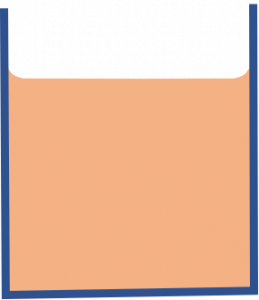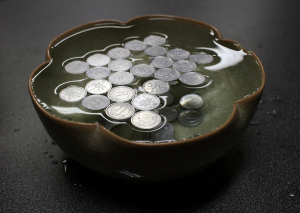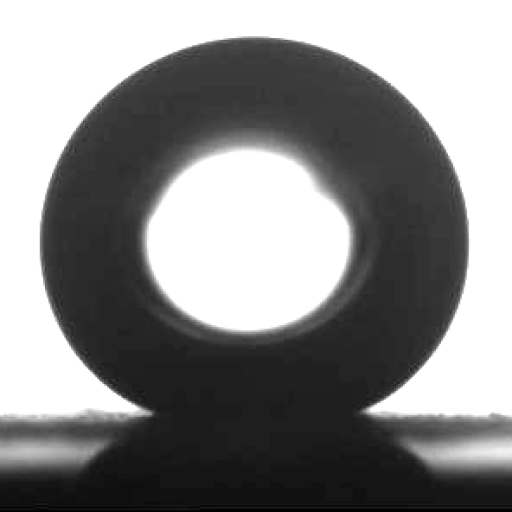Cheerios Effect
It is well-known that breakfast cereals such as Cheerios in a bowl of milk tend to clump together or cling to the sides of the bowl. This is known as the Cheerios effect. The Cheerios effect arises because of surface tension. Water near the edge of a glass curves upwards because the water is attracted to the glass forming a meniscus. The same applies to milk near the edge of a bowl.

Cheerios are less dense than milk. An upward-curving meniscus will form between a cheerio and the milk, creating a “hill” on the surface of the milk. Floating objects always seek the highest point on the surface upon which they float. Hence another cheerio will be attracted either to another cheerio or to the edge of the bowl.
Small objects such as paper clips and coins that are denser than water (or milk) can still float on the surface of a liquid due to the “skin effect” of surface tension. These objects will clump together like in the case of Cheerios, although they won’t be attracted to the edges of a bowl. In this case, the weight of the objects causes downward-curving meniscii at their edges, as can be seen in the image below. In this case, the heaver objects seek the lowest point on the surface, which is next to other floating objects.

The Cheerios effect is explained clearly in the video from TEDEd below.
The video also shows how the floating plastic head of a drawing pin is repelled from a complete floating drawing pin. This is because the head of the drawing pin is less dense than water so has an upward-curving meniscus, and the complete drawing pin is more dense so has a downward-curving meniscus. The plastic head wants to seek out higher points on the surface of the water and the complete drawing pin wants to seek out lower points. Hence they move away from each other.
Similar surface tension effects to those in the Cheerios effect explain how insects such as pond skaters can propel themselves across the surface of a pond without getting trapped.
Publication
The “Cheerios effect” D. Vella and L. Mahadevan, Am. J. Phys. 73 (2005), 817
